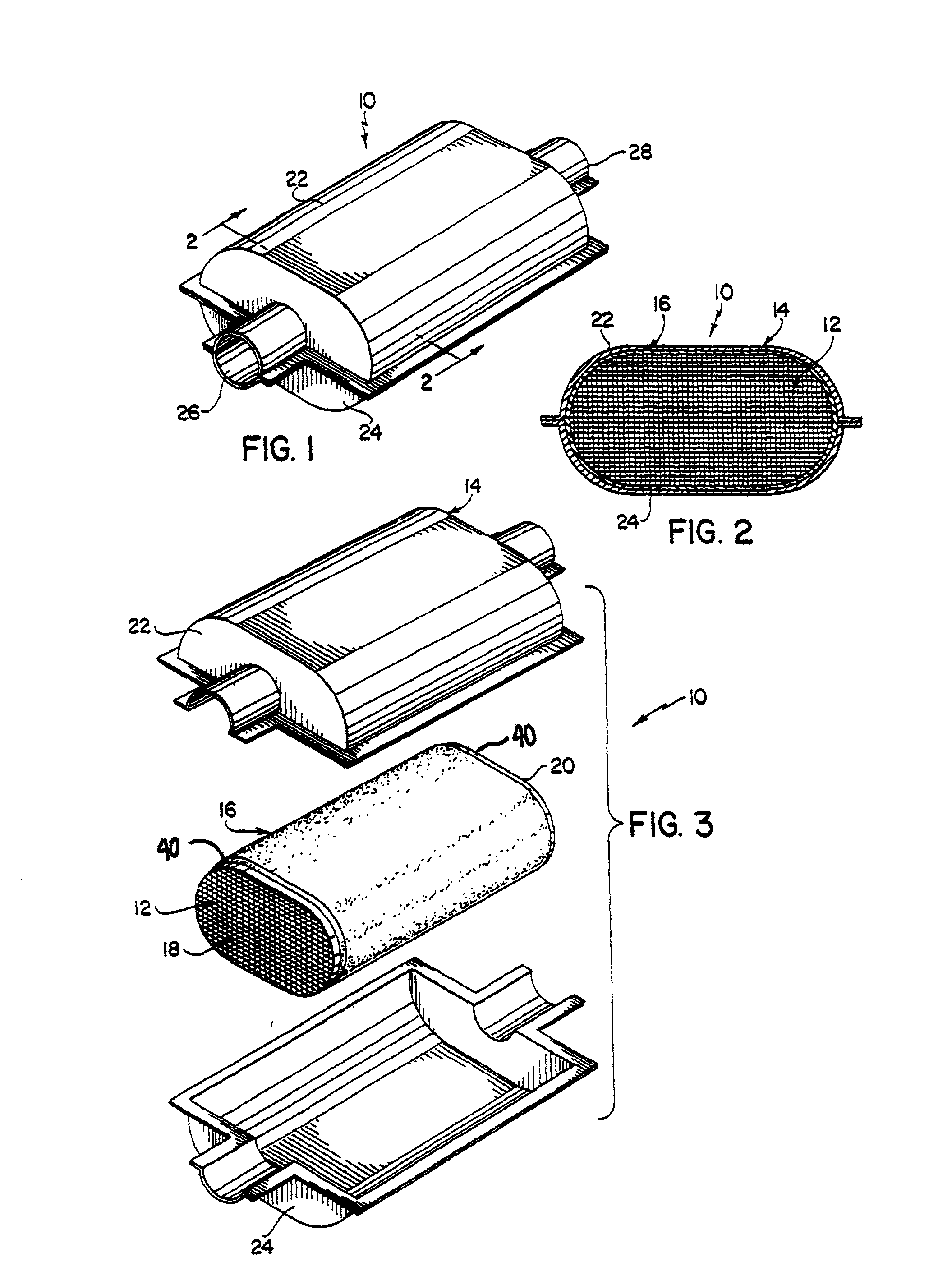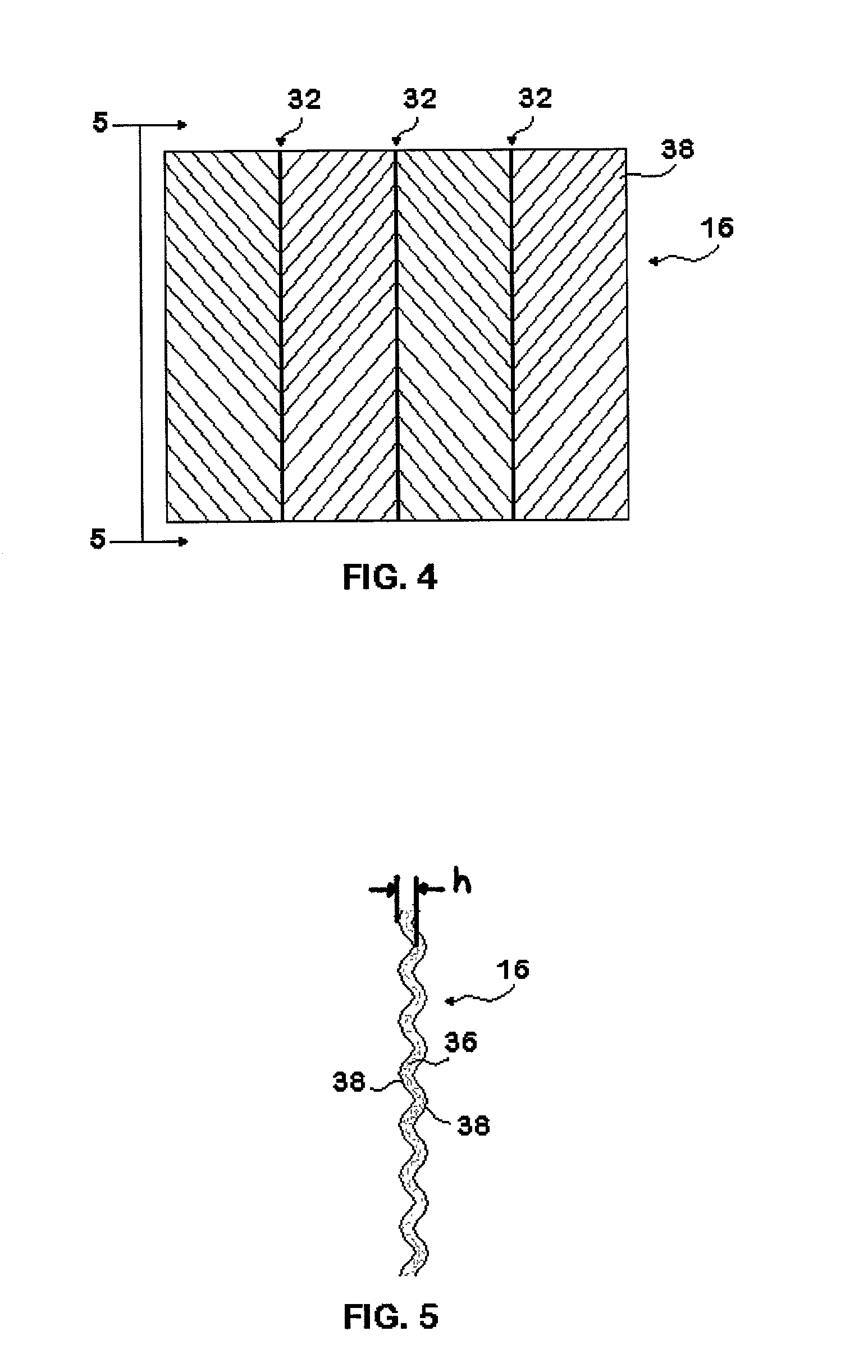Catalytic monolith support system with improved thermal resistance and mechanical properties
a monolith support system and catalytic converter technology, applied in the direction of machines/engines, other domestic objects, separation processes, etc., can solve the problems of reducing the effectiveness of catalysts, unsatisfactory support systems for catalytic converters, and uncomfortably warm temperatures in the cab compartment, so as to reduce heat transfer, prevent some heat, and increase efficiency
- Summary
- Abstract
- Description
- Claims
- Application Information
AI Technical Summary
Benefits of technology
Problems solved by technology
Method used
Image
Examples
Embodiment Construction
[0027] For an example of the support system recovery from compression, a sample, with a wire having 0.014 in. diameter and a composite thermal paper made by Thermal Ceramics under the model number A286, was tested with several initial crimp heights ranging from 0.231 in. to 0.233 in. The results of the tests conducted at various temperatures and mechanical compression duration periods are shown in Table 1 below.
1TABLE TEST TEMPERATURE (.degree. F.) INITIAL COMPRESSION INITIAL RECOVERY % RECOVERY LOSS / DURATION @ 0.165" GAP (PSI) @ 0.165" GAP (PSI) @ 0.165" GAP (PSI) Ambient 63.4 38.5 39.3% 1300 / 5 HRS 64.0 49.1 23.3%
[0028] The present arrangement has many advantages over the prior art, as discussed above. Additionally, the present invention is not effected by cold-hold issues, which are a problem with prior art systems using intumescent sealing material; such prior art systems are ineffectual until the temperature rises sufficiently to allow for the intumescent material to expand and...
PUM
| Property | Measurement | Unit |
|---|---|---|
| temperatures | aaaaa | aaaaa |
| temperatures | aaaaa | aaaaa |
| thermal insolation | aaaaa | aaaaa |
Abstract
Description
Claims
Application Information
 Login to View More
Login to View More - R&D
- Intellectual Property
- Life Sciences
- Materials
- Tech Scout
- Unparalleled Data Quality
- Higher Quality Content
- 60% Fewer Hallucinations
Browse by: Latest US Patents, China's latest patents, Technical Efficacy Thesaurus, Application Domain, Technology Topic, Popular Technical Reports.
© 2025 PatSnap. All rights reserved.Legal|Privacy policy|Modern Slavery Act Transparency Statement|Sitemap|About US| Contact US: help@patsnap.com


